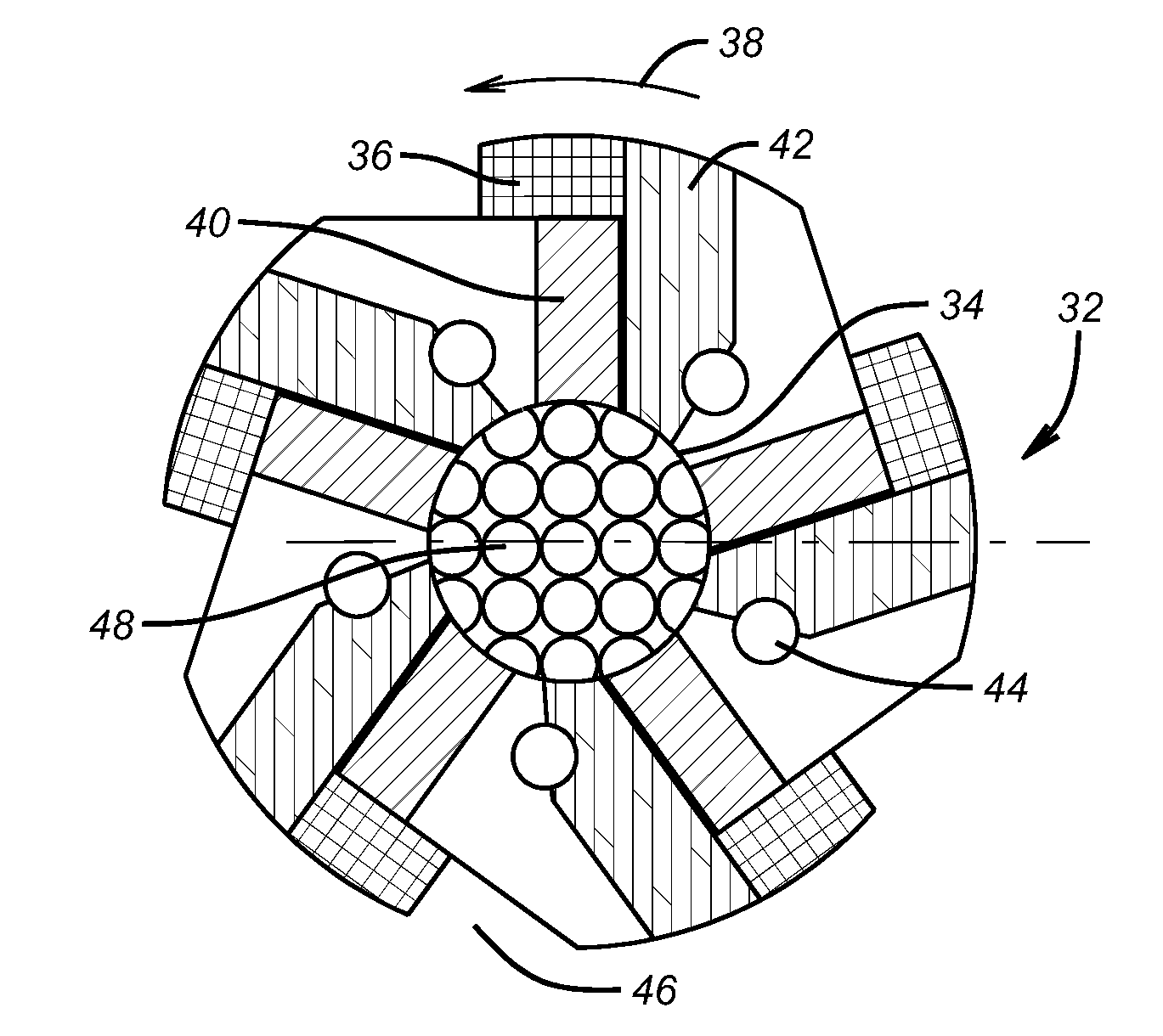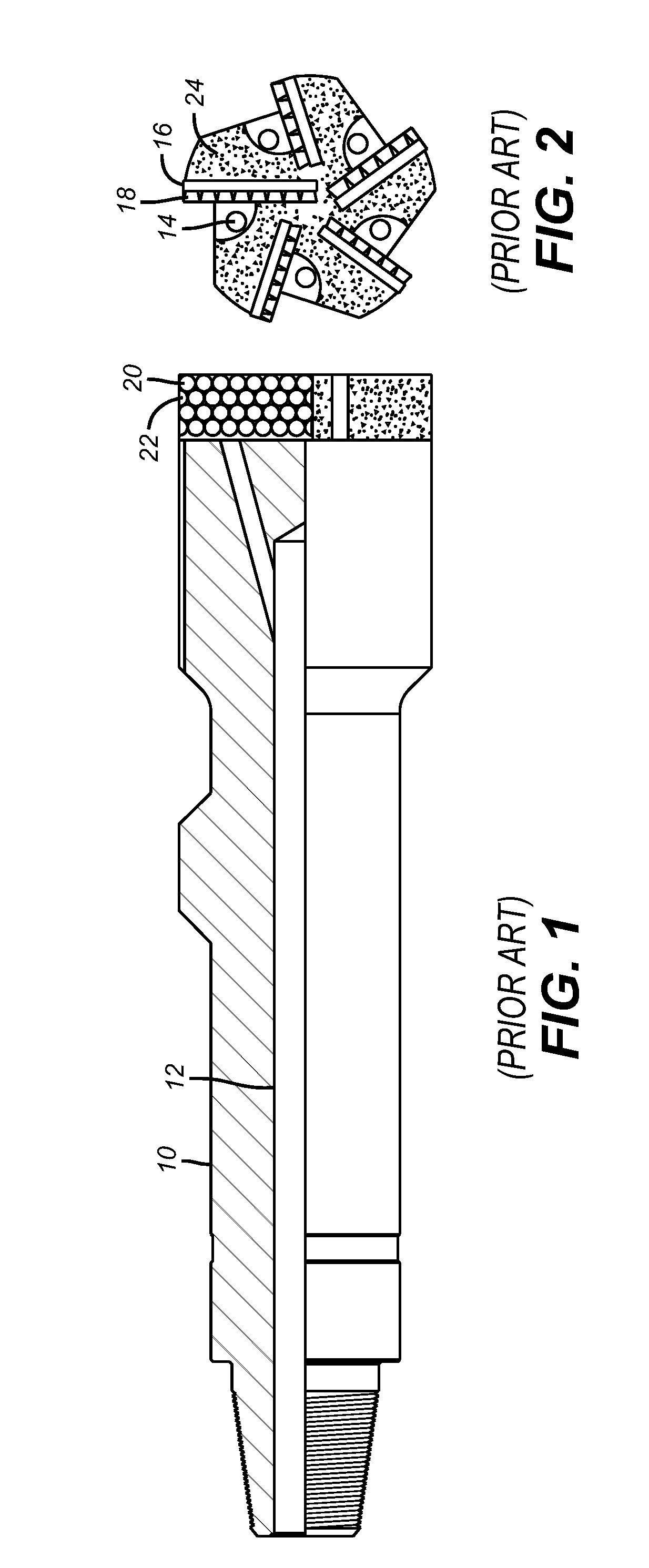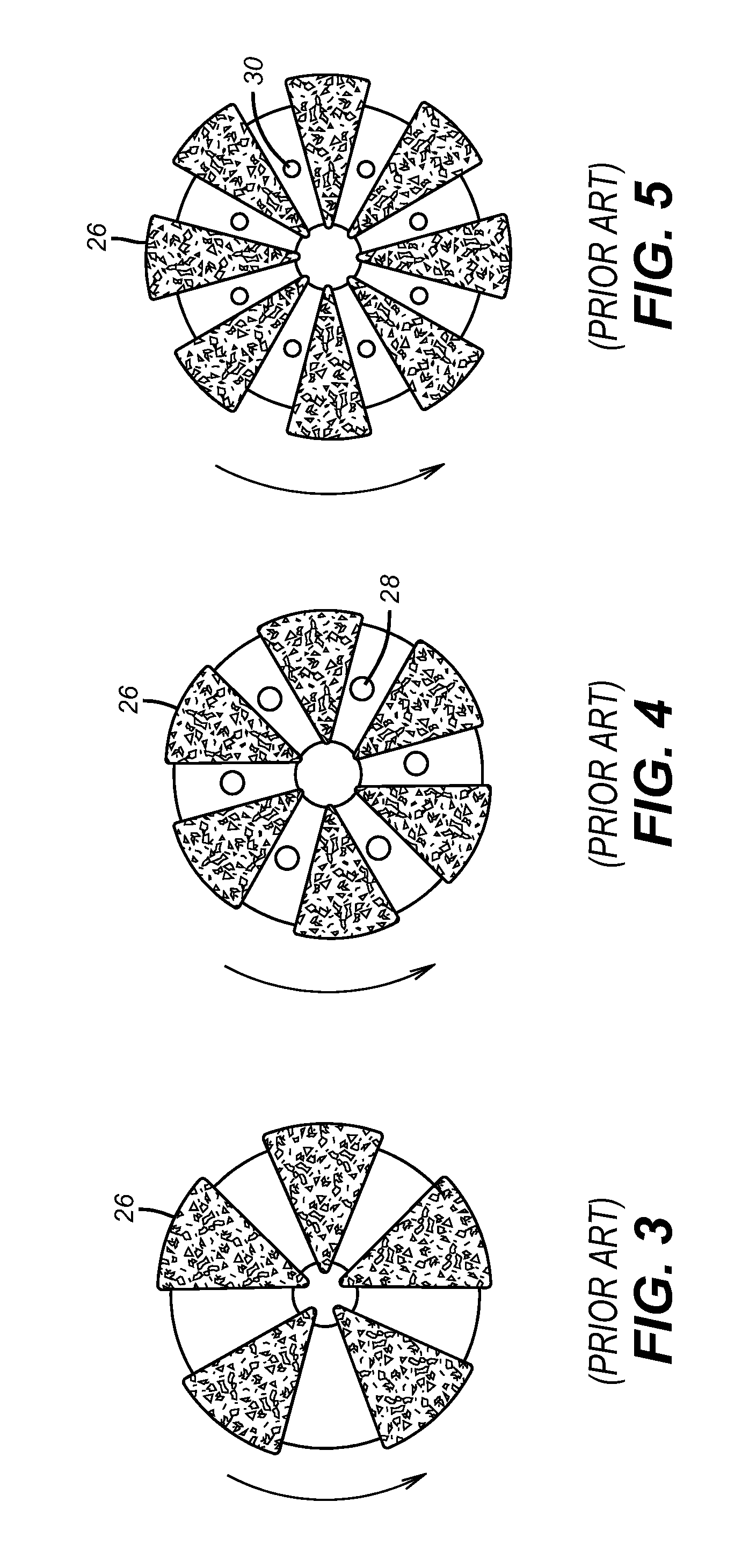Subterranean Cutting Tool Structure Tailored to Intended Use
a cutting tool and subterranean technology, applied in earthwork drilling, construction, well accessories, etc., can solve the problems of affecting the use of the tool, the center of the mill is very low relative speed to the surface being cut, and the demand for different locations of the mill is not symmetrical, etc., to achieve high impact resistance, good temperature bonding strength, and high wear resistance
- Summary
- Abstract
- Description
- Claims
- Application Information
AI Technical Summary
Benefits of technology
Problems solved by technology
Method used
Image
Examples
Embodiment Construction
[0019]FIG. 6 shows the bottom view of a mill 32 that has a central zone 34 and a plurality of leading peripheral spaced apart zones 36 as determined by the direction of rotation represented by the arrow 38. In between are leading 40 and trailing 42 cutting regions where most of the cutting takes place and the chips off the fish are formed. The trailing region is also disposed behind the peripheral zones 36 in the direction of rotation. A series of ports 44 border the trailing region 42 and are there to allow pumped fluid to drive the cuttings to the edges where they can make a turn uphole through gaps such as 46. The cutting elements 48 in zone 34 are illustrated in detail in FIG. 7. This shape is formed from a starting shape of a sphere and cut with a cylindrical drill that passes through the shape at four perpendicular orientations. This leaves end rounded shapes 50 and 52 that are spherical and are separated by four part cylindrical walls of which three are visible in FIG. 7 name...
PUM
| Property | Measurement | Unit |
|---|---|---|
| insert angles | aaaaa | aaaaa |
| angle | aaaaa | aaaaa |
| angles | aaaaa | aaaaa |
Abstract
Description
Claims
Application Information
 Login to View More
Login to View More - R&D
- Intellectual Property
- Life Sciences
- Materials
- Tech Scout
- Unparalleled Data Quality
- Higher Quality Content
- 60% Fewer Hallucinations
Browse by: Latest US Patents, China's latest patents, Technical Efficacy Thesaurus, Application Domain, Technology Topic, Popular Technical Reports.
© 2025 PatSnap. All rights reserved.Legal|Privacy policy|Modern Slavery Act Transparency Statement|Sitemap|About US| Contact US: help@patsnap.com



